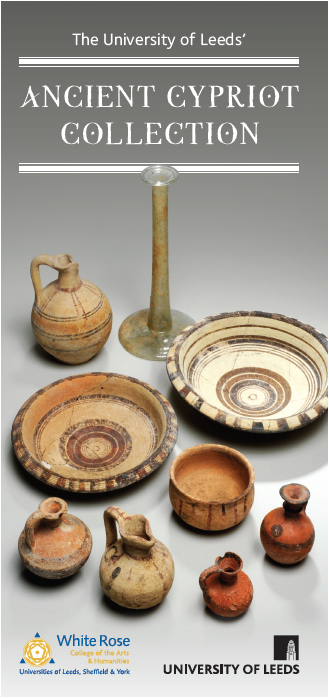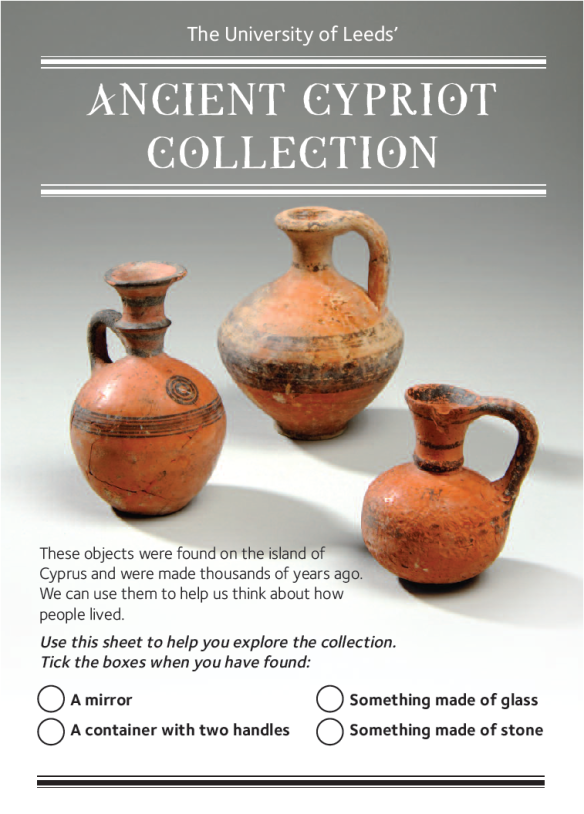Thanks to the Leeds City Museum, the University of Leeds’ ancient Cypriot collection is finally on display for a larger audience – something I’ve wanted to happen for a long time. Until around December, a selection of the objects are being displayed in a new case in the Ancient Worlds gallery at the Museum. It’s been so interesting and educational for me to help the Museum’s curators to put together the display, from deciding which objects should be included, to designing leaflets, writing the interpretative panel text and labels, and placing the objects in the case. It’s great to see my Masters research put to practical use!

Display of University of Leeds’ ancient Cypriot collection at the Leeds City Museum
As long-term blog readers will know, this collection emerged from obscurity in the University’s cellars in 1913, shortly after the death of Sir Nathan Bodington, first Vice-Chancellor of the University of Leeds. His widow, Lady Eliza Bodington, went to some trouble to ensure that the objects were assessed and appropriately placed, and the bulk of the collection has found a home in the Classics department ever since (a further portion was donated to the Leeds Girls’ High School, but its current whereabouts is unknown).
Thanks to the generosity of the Leeds Philosophical and Literary Society, conservation work was carried out by the Leeds City Museum’s conservator a couple of years ago, revealing details unseen for a very long time, and stabilising the objects for the future. It’s great to see the collection now on display, so the results of this conservation can be seen by museum visitors, and something of the objects’ history – known and conjectured – can be explored. I’m planning to give a gallery talk on the collection and its background, and generally to make myself available for any questions – so if anyone wants to know more, do get in touch!

Front page of leaflet accompanying display
The display is generously supported by the White Rose College of the Arts and Humanities, and as part of this it’s accompanied by a leaflet with background information for adults, and one with activities for children. I’ve really enjoyed exploring different ways of looking at the objects and thinking about them.

First page of children’s trail
I’m hopeful that this is just the start of the collection’s public engagements. After its stay at the Museum, it is due to move to a new home on display in the School of Languages, Cultures and Societies at the University of Leeds, where Classics is now located. This will offer further opportunities to explore the objects and their history, working with Classics undergraduate students.
I am reminded again of Eliza Bodington’s wishes in donating part of the collection to the Classics department in 1913, that ‘it might encourage a taste for archaeology in which my husband was so interested.’ I hope its current location among the archaeological collections in the Ancient Worlds gallery, and its future display at the University, will help to honour and fulfil this wish.
